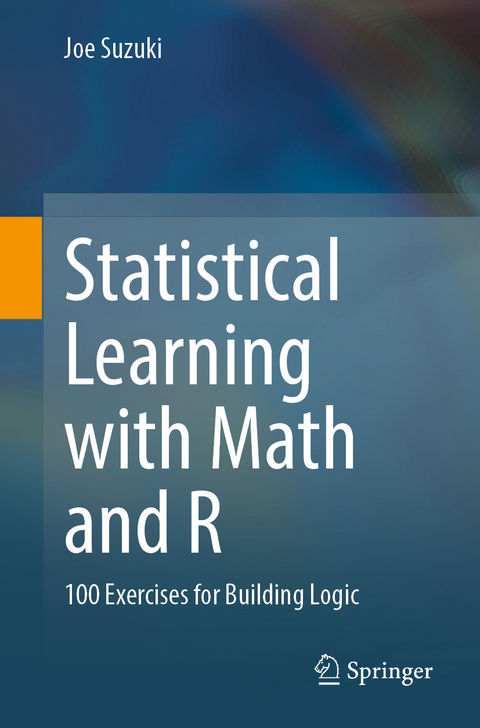
Statistical Learning with Math and R
100 Exercises for Building Logic
Seiten
2020
|
1st ed. 2020
Springer Verlag, Singapore
978-981-15-7567-9 (ISBN)
Springer Verlag, Singapore
978-981-15-7567-9 (ISBN)
The most crucial ability for machine learning and data science is mathematical logic for grasping their essence rather than knowledge and experience. This textbook approaches the essence of machine learning and data science by considering math problems and building R programs.
As the preliminary part, Chapter 1 provides a concise introduction to linear algebra, which will help novices read further to the following main chapters. Those succeeding chapters present essential topics in statistical learning: linear regression, classification, resampling, information criteria, regularization, nonlinear regression, decision trees, support vector machines, and unsupervised learning.
Each chapter mathematically formulates and solves machine learning problems and builds the programs. The body of a chapter is accompanied by proofs and programs in an appendix, with exercises at the end of the chapter. Because the book is carefully organized to provide the solutions to the exercisesin each chapter, readers can solve the total of 100 exercises by simply following the contents of each chapter.
This textbook is suitable for an undergraduate or graduate course consisting of about 12 lectures. Written in an easy-to-follow and self-contained style, this book will also be perfect material for independent learning.
As the preliminary part, Chapter 1 provides a concise introduction to linear algebra, which will help novices read further to the following main chapters. Those succeeding chapters present essential topics in statistical learning: linear regression, classification, resampling, information criteria, regularization, nonlinear regression, decision trees, support vector machines, and unsupervised learning.
Each chapter mathematically formulates and solves machine learning problems and builds the programs. The body of a chapter is accompanied by proofs and programs in an appendix, with exercises at the end of the chapter. Because the book is carefully organized to provide the solutions to the exercisesin each chapter, readers can solve the total of 100 exercises by simply following the contents of each chapter.
This textbook is suitable for an undergraduate or graduate course consisting of about 12 lectures. Written in an easy-to-follow and self-contained style, this book will also be perfect material for independent learning.
Joe Suzuki is a professor of statistics at Osaka University, Japan. He has published more than 100 papers on graphical models and information theory.
Chapter 1: Linear Algebra.- Chapter 2: Linear Regression.- Chapter 3: Classification.- Chapter 4: Resampling.- Chapter 5: Information Criteria.- Chapter 6: Regularization.- Chapter 7: Nonlinear Regression.- Chapter 8: Decision Trees.- Chapter 9: Support Vector Machine.- Chapter 10: Unsupervised Learning.
| Erscheinungsdatum | 26.10.2020 |
|---|---|
| Zusatzinfo | 65 Illustrations, color; 3 Illustrations, black and white; XI, 217 p. 68 illus., 65 illus. in color. |
| Verlagsort | Singapore |
| Sprache | englisch |
| Maße | 155 x 235 mm |
| Themenwelt | Informatik ► Theorie / Studium ► Künstliche Intelligenz / Robotik |
| ISBN-10 | 981-15-7567-3 / 9811575673 |
| ISBN-13 | 978-981-15-7567-9 / 9789811575679 |
| Zustand | Neuware |
| Informationen gemäß Produktsicherheitsverordnung (GPSR) | |
| Haben Sie eine Frage zum Produkt? |
Mehr entdecken
aus dem Bereich
aus dem Bereich
Buch | Softcover (2024)
REDLINE (Verlag)
20,00 €
Eine kurze Geschichte der Informationsnetzwerke von der Steinzeit bis …
Buch | Hardcover (2024)
Penguin (Verlag)
28,00 €


